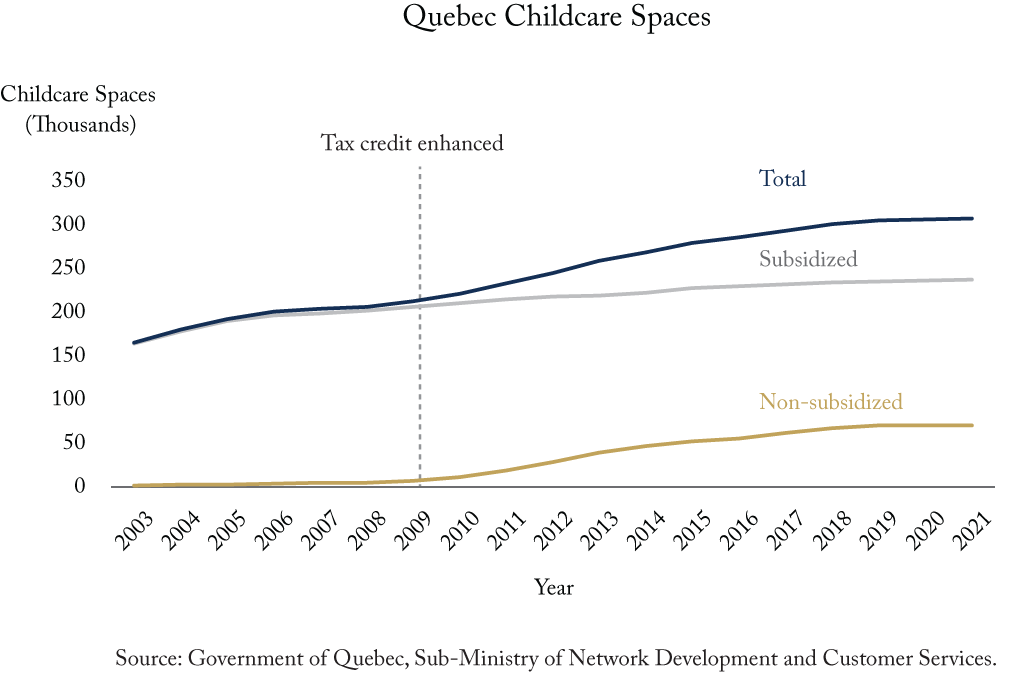Payments To Parents For Childcare Can Spur Supply Of New Spaces
Posted on September 8, 2021 in Child & Family Policy Context
Source: CDHowe.org — Authors: Alexandre Laurin, Janice MacKinnon
CDHowe.org – Graphic Intelligence
September 7, 2021. Janice MacKinnon, Alexandre Laurin
A frequently repeated talking point is that sending daycare subsidies to parents, instead of daycare operators, is of no benefit because it doesn’t increase spaces. Is there merit to this claim?
For many years, Quebec has offered families two options for making childcare more affordable: 1) subsidized spaces with a low universal flat fee, which can be in non-for-profit centres or with recognized home care providers, and 2) a refundable tax credit for childcare costs in non-subsidized daycares, paid directly to parents.
Quebec significantly increased the generosity of its refundable tax credit for childcare expenses as part of its 2009-2010 Budget. The increase was, in part, motivated by the desire to bring the net cost of childcare in non-subsidized daycares closer to the cost of a subsidized space. In response, the number of government-recognized non-subsidized spaces skyrocketed quickly, showing the elasticity of the supply.

This supports the argument that non-subsidized spaces can be created quickly in response to an increase in demand (driven by generous childcare-related payments to parents). The Quebec experience shows that subsidized licensed care can coexist with a refundable tax credit system for non-subsidized care, and that increasing the supply of childcare can also originate from direct payments to parents.
To learn more about arguments in favour of childcare payments to parents, please read “Payments to Parents: The Better Childcare Answer” by Janice MacKinnon and Alexandre Laurin.
https://www.cdhowe.org/graphic-intelligence/payments-parents-childcare-can-spur-supply-new-spaces
Tags: budget, child care, ideology, jurisdiction, participation
This entry was posted on Wednesday, September 8th, 2021 at 12:30 pm and is filed under Child & Family Policy Context. You can follow any responses to this entry through the RSS 2.0 feed. You can skip to the end and leave a response. Pinging is currently not allowed.
 Recent Comments
Recent Comments